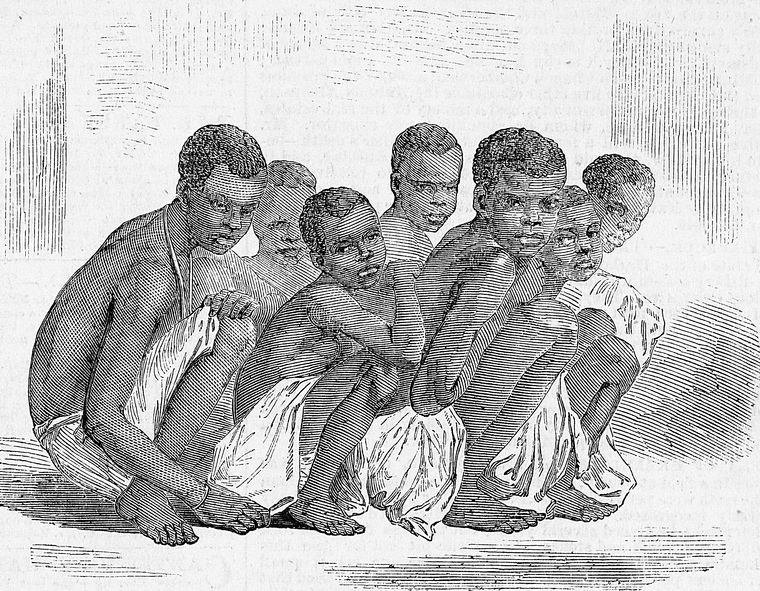
the first people to be enslaved in Virginia were imported from Africa, often by way of Caribbean islands such as Barbados
Schomburg Center, New York Public Library, Slaves packed below and on deck

the first people to be enslaved in Virginia were imported from Africa, often by way of Caribbean islands such as Barbados
Schomburg Center, New York Public Library, Slaves packed below and on deck
The first Africans brought to Virginia arrived in 1619, after pirates in the White Lion and Treasurer stole 50 men and women from a Portuguese slave ship Sao Joao Bautista. The "20 and odd Negroes" had been destined to be unloaded at Vera Cruz, as part of the routine transatlantic trade in people to provide unpaid labor in the Spanish and Portuguese colonies. When the two ships sailed to Virginia after the theft of the Africans, the Virginia Company's colony became a place to sell people who had not voluntarily chosen to become an indentured servant for up to seven years.
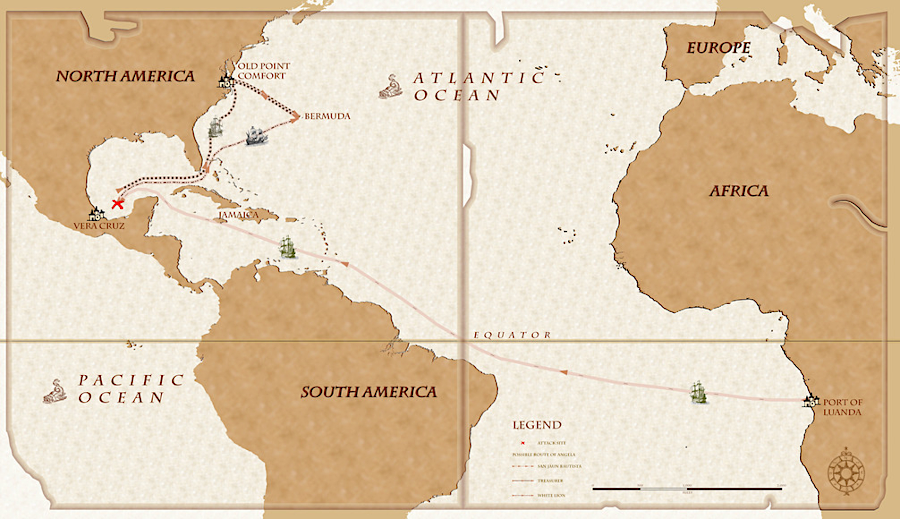
the captives brought to Hampton in 1619 were destined for Mexico, until the White Lion and Treasurer intercepted the slave ship Sao Joao Bautista near Vera Cruz (red X)
National Park Service, Possible Route of Angela
The first purchase and involuntary transfer of Africans within Virginia occurred at the mouth of the James River, what is now the City of Hampton. The people brought in 1619 by two English pirates were sold to the colonial governor and Cape Merchant, the quartermaster responsible for obtaining supplies. The formal status of those Africans after 1619 is poorly documented, but their sale is the beginning of the slave trade in Virginia.
The transatlantic slave trade had started in Africa centuries earlier. Starting in the 1400's, Portuguese traders at West African forts sold people to ship captains. The first shipments were to Europe and especially to the Cape Verde and Madeira islands, where labor was needed in the sugar plantations. By the end of the Atlantic slave trade, there had been 36,000 trips across the ocean with enslaved people as cargo.
Starting in the 1500's, the primary customers for the human cargo were landowners in Brazil, on Caribbean islands, and in Central America. The trip across the Atlantic Ocean was harsh, with people packed tightly in holds underneath the deck of the ship. Food was transferred through hatches. Waste from the trapped people was either brought up through hatches for disposal overboard, or allowed to flow down into the bilge water. The stench below decks was intense.
Ship captains made a trade-off between keeping as many people alive for sale at the end of the voyage vs. reducing the costs to maintain the "cargo." It was common to throw dead people overboard throughout the trip. Allowing living people up through the hatches to experience fresh air on the deck might keep more people alive, but exposed the small number of sailors to the risk of attack.
English captains were engaged in the transatlantic slave trade starting in the 1500's, but it England did not acquire the license ("asiento") from the Spanish government to legally transport slaves to the Western Hemisphere until 1713. By the time the Treaty of Utrech was signed, the colony in Virginia was largely self-sufficient in producing as many slaves as were needed. By then the General Assembly had passed laws which defined the children of enslaved mothers as perpetually enslaved people, perpetuating a labor force that would never be paid.1
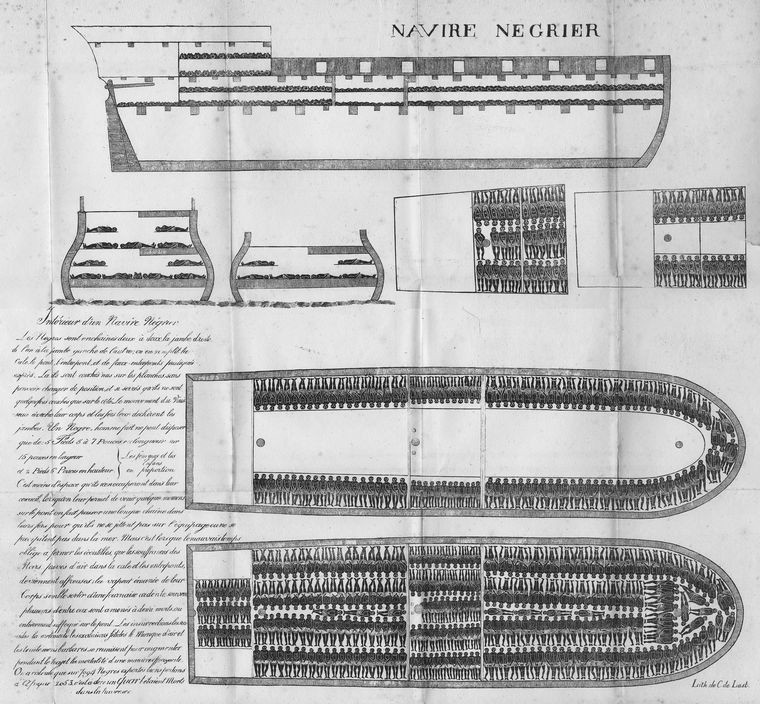
slave ships were designed to maximize the number of people who could be loaded, but not to maximize survival during the trip
Schomburg Center, New York Public Library, Navire Negrier
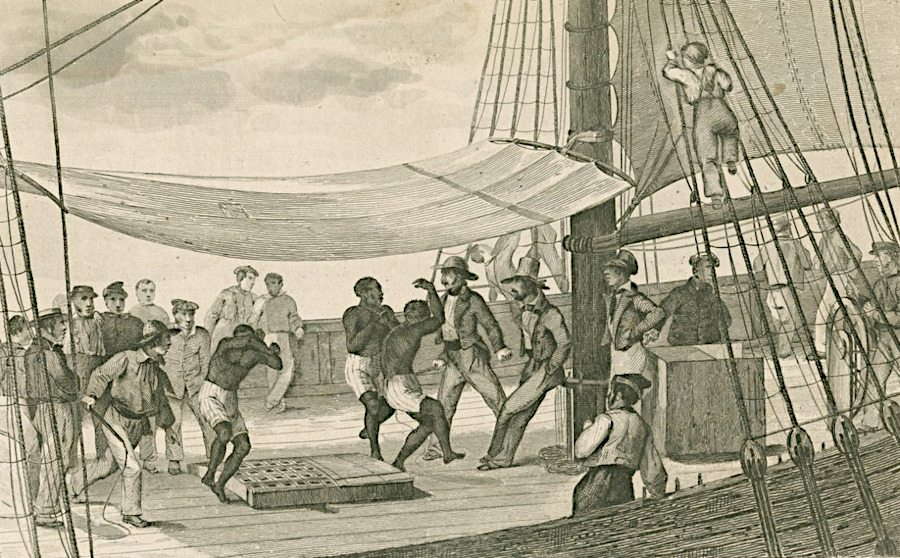
sailors could allow a few people at a time on deck, at different times during the transatlantic voyage
Schomburg Center, New York Public Library, Slaves packed below and on deck
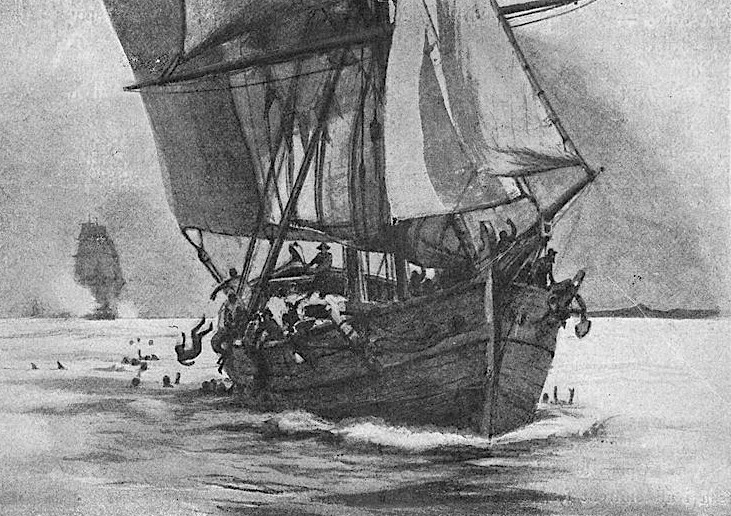
slave ships threw dead and rebellious "cargo" overboard
Schomburg Center, New York Public Library, Krydseren kommer!
By the end of the 1600's, Virginia's General Assembly had established the legal framework for chattel slavery. All children born to an enslaved woman were doomed to a lifetime of labor without compensation, with the freedom to choose where to live, and without fundamental human rights. People had become property. Farm overseers, and later industries such as iron furnaces and railroads, assigned work to enslaved people comparable to the way tasks were identified for horses and mules.
Enslaved people were valued based upon their age, their capacity to work, and their capacity to breed and provide the slaveowner with more "property." They were used as security for mortgages, and if the slaveowner lacked adequate funds to pay debts then enslaved people were sold as property.
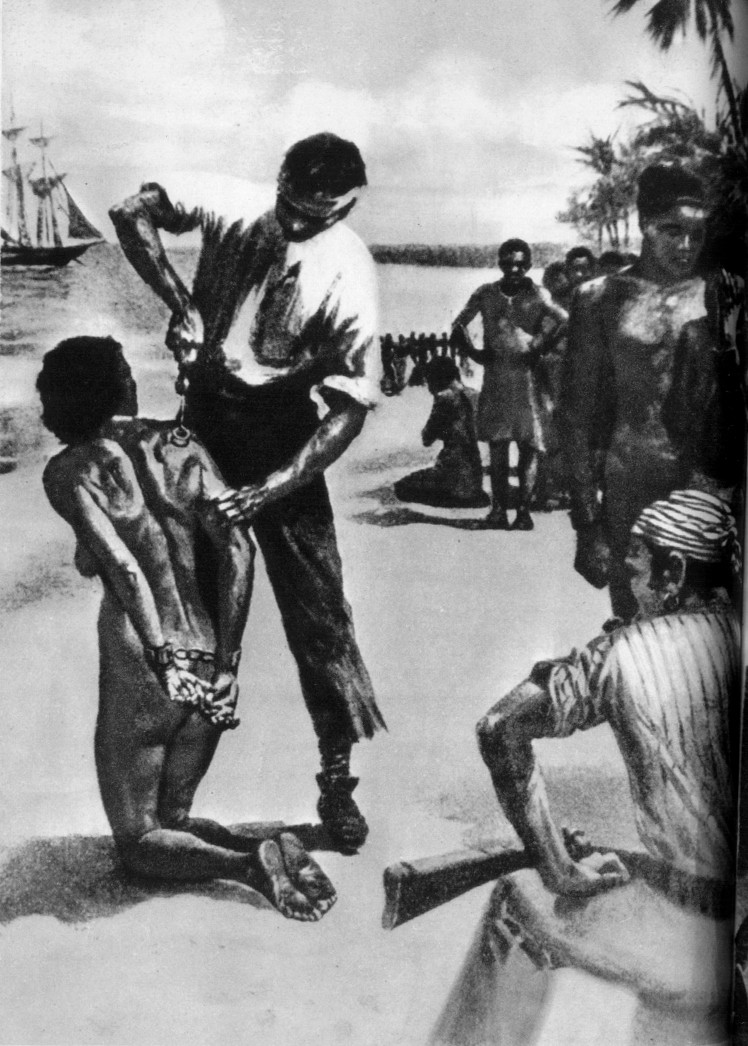
enslaved people were branded with a hot iron, to make them easier to identify
Source: Slavery Images: A Visual Record of the African Slave Trade and Slave Life in the Early African Diaspora, Branding a Negro Woman
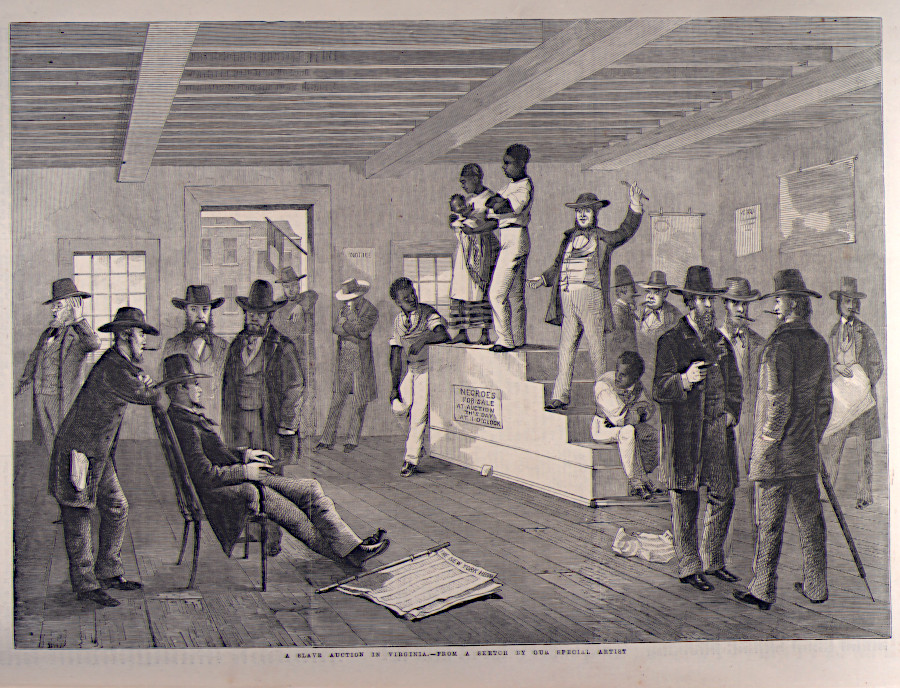
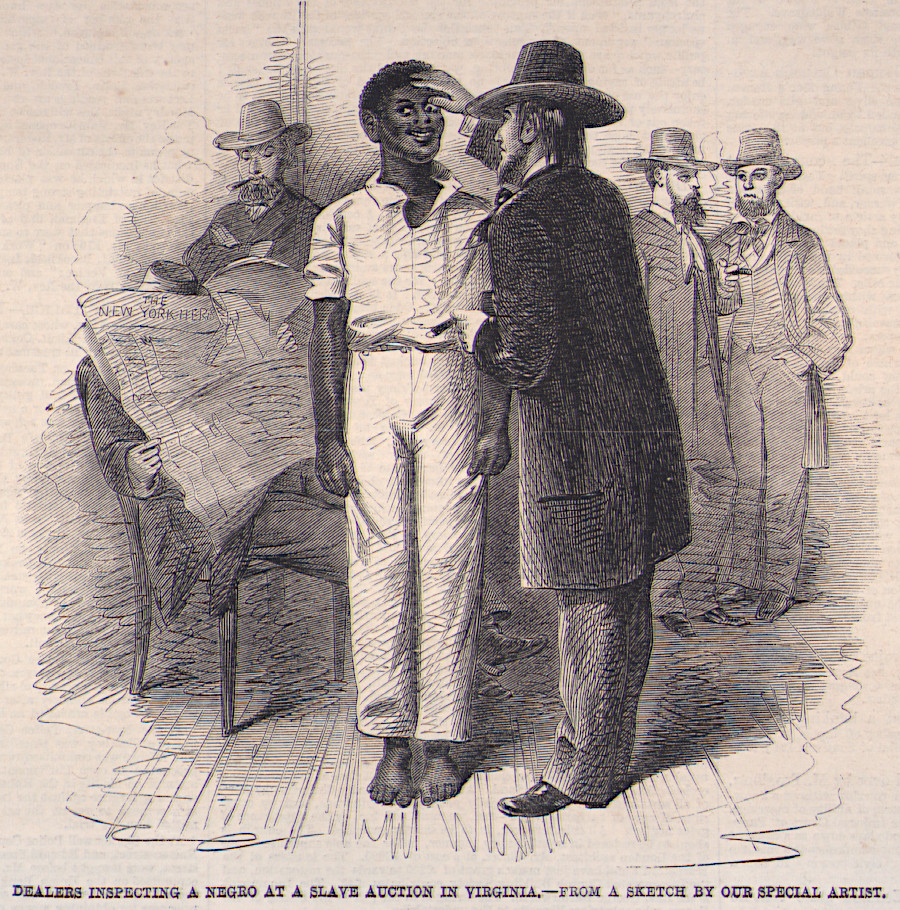
people were sold at auction to the highest bidder
Source: Slavery Images: A Visual Record of the African Slave Trade and Slave Life in the Early African Diaspora, A Slave Auction in Virginia and Slave Sale, Richmond, Virginia, 1861
If a white person acquired more land than his family could farm, then he needed to acquire farmworkers. In the 1600's He could acquire indentured servants, who had to work for him (or be assigned to other landowners) until the term of indenture expired and they became free. Free white people could be hired as farmworkers. However, if the landowner had no moral objections to slavery and sufficient capital, he could purchased workers who would not be compensated.
Enslaved people were needed primarily as farm workers. Landowners who sold acreage often sold off enslaved people working that land as well, reflecting the landowner's reduced need for labor. Enslaved people might not move from a farm when ownership changed. In other situations enslaved people would be acquired by landowners living nearby, sold in private transactions rather than a public auction at the county courthouse.
A traveler from Switzerland recorded in 1702:2
By the 1800's, "natural increase" (birth of new children to enslaved mothers) led to an imbalance. Virginia slaveowners had an excess of enslaved workers, while landowners in the cotton-growing areas further south had a shortage. The result was a slave trade within the United States, with Virginia exporting people as a commercial product.
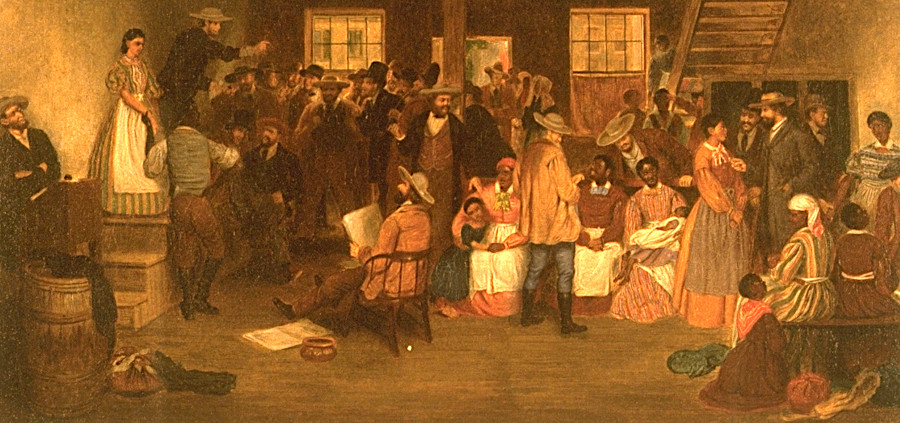
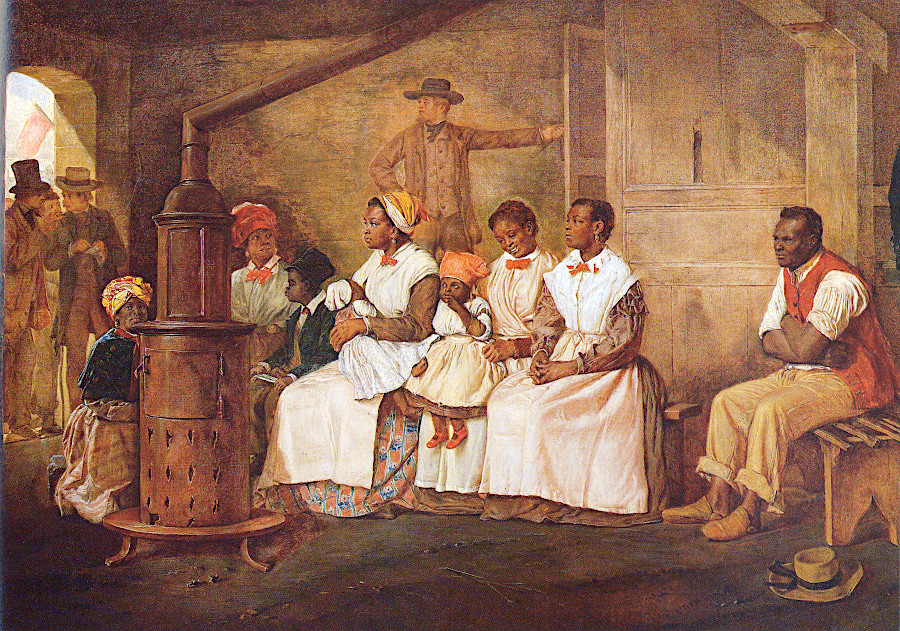
even during the Civil War, there were slave auctions in Richmond
Source: Slavery Images: A Visual Record of the African Slave Trade and Slave Life in the Early African Diaspora, Slave Auction, Richmond, Virginia, 1862 and Slaves Waiting for Sale, Richmond, Virginia, 1861
Transportation of enslaved people within Virginia, and to/from other colonies, balanced supply with demand from both agricultural and industrial customers. The slave trade business involved speculative purchase, transfer, and resale of enslaved people. The economics of that slave trade was comparable to the speculative purchase, transfer, and sale of corn, wheat, and livestock.
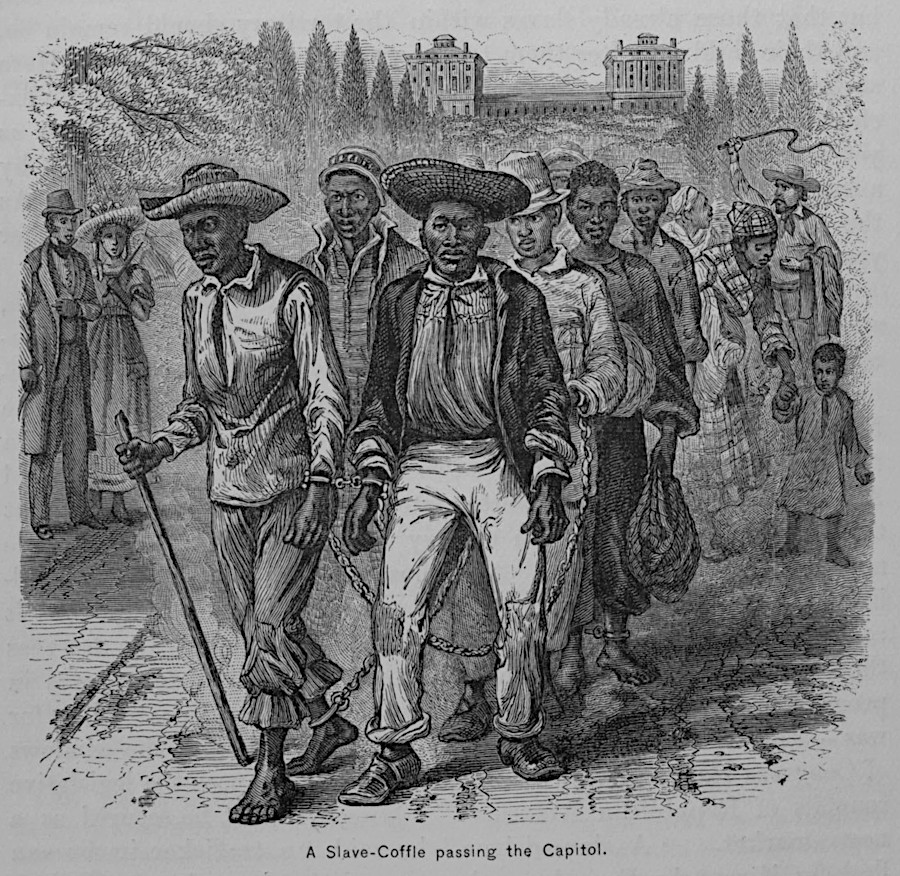
during the 1819 debate over admitting Missouri as a slave state, a coffle of enslaved people were marched past the US Capitol in Washington, DC
Source: Slavery Images: A Visual Record of the African Slave Trade and Slave Life in the Early African Diaspora, Slave Coffle, Washington, D.C., ca. 1819
Henry Brown, who later became famous for escaping enslavement by being shipped in a box from Richmond to Philadelphia, recorded the day his family was broken up by the sale traders:3
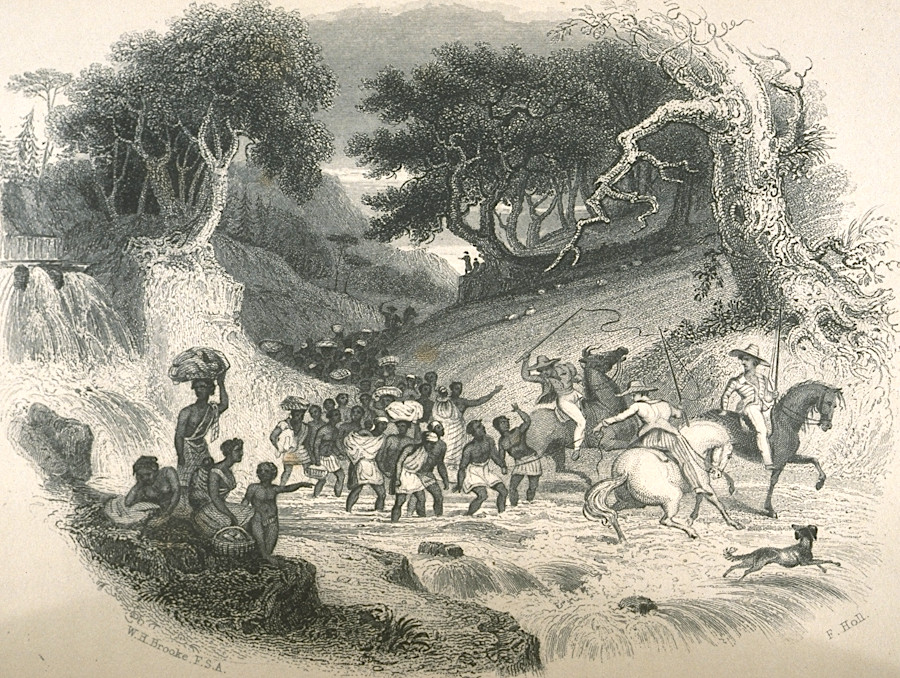
enslaved people were organized into a group ("coffle") and marched from purchase sites to sale sites, in this case near Fredericksburg in 1839
Slavery Images: A Visual Record of the African Slave Trade and Slave Life in the Early African Diaspora, Slave Coffle, Virginia, 1839
Not all travel by enslaved people involved market-based transactions. Slaveowners transferred their "property" to children through gifts and according to wills when a patriarch died. Overseers moved enslaved people to different farms as landowners changed which crops they were growing, or needed a pool of labor to clear land, erect buildings, repair fences, plant/harvest crops, or perform other temporary tasks.
Virginia slaveowners did participate in a local exchange program involving enslaved people. Owners with more enslaved people than they needed for farming operations would rent out their surplus, typically for a year, in contracts arranged around Christmas.
Such deals were made between people who knew each other, rather than with strangers, but still specified the care which would be provided to the enslaved workers. By renting only within the local area, it was possible for slaveowners to monitor working and living conditions. That helped to ensure the "property" would be returned in good condition at the end of the contract. Through the rental process, an enslaved individual or group of people could be moved within a local region several times during their lifetime.
During construction of railroads in the 1800's, slaveowners were paid for the use of their people. During construction of the Blue Ridge Tunnel, slaveowner contracts prohibited workers from being assigned to tasks within the tunnel. In contrast, Irish laborers were paid higher wages for performing riskier work such as blasting rock, and could go on strike for better pay and safer working conditions. When the tunnel was completed, the enslaved workers returned to owners in the local area. The Irish workers had the option of take a job in Massachusetts if they wished.4
Only a very few trusted people who were officially enslaved had the freedom to travel significant distances on their own. A handful of trusted men working for Thomas Jefferson, George Washington, and other members of the elite gentry were able to travel between Williamsburg, Philadelphia, and Virginia plantation manor houses. Slave patrols would require such travelers to display a pass from the slaveowner. Any black person found traveling away from their slaveowner's base territory who lacked a pass, or official papers proving their status as a "free person of color," would be taken to the county jail until claimed by their owner.
A particular group of enslaved men had extraordinary freedom to travel without a white overseer. The boatmen, such as those floating batteaux down the Roanoke River, would be free from oversight during their trip downstream. They had authority to conduct transactions at the end of the trip.
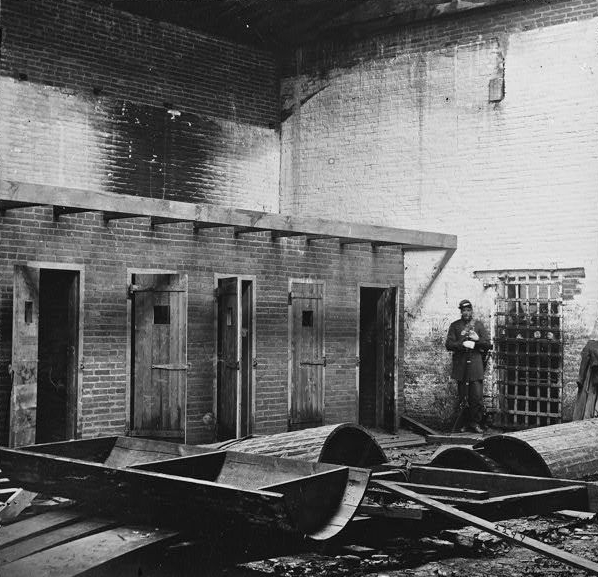
enslaved people were imprisoned in Alexandria slave pens before being sold or shipped to market
Source: National Park Service, Alexandria's Slave Pens
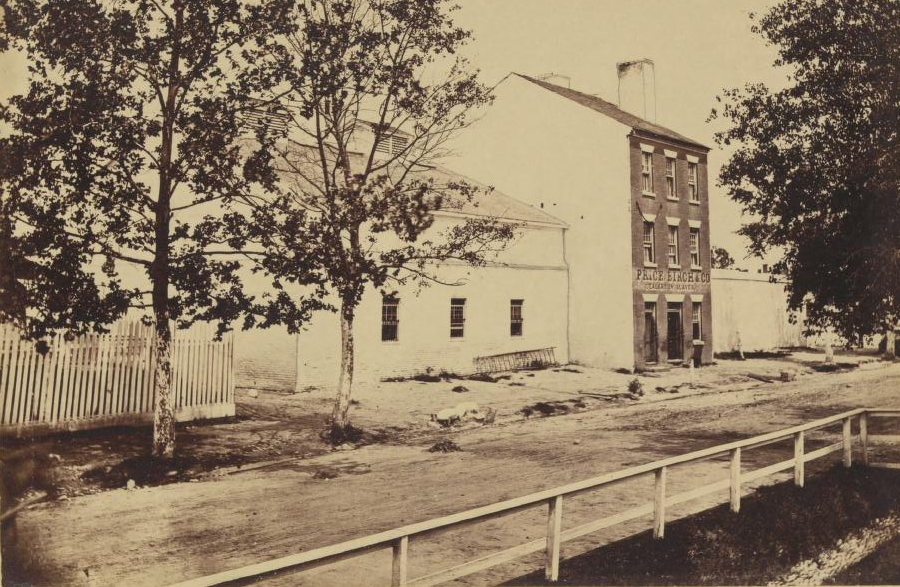
site of Alexandria slave pen in August, 1862
Source: Alexander Gardner, Gardner's Photographic Sketch Book of the War
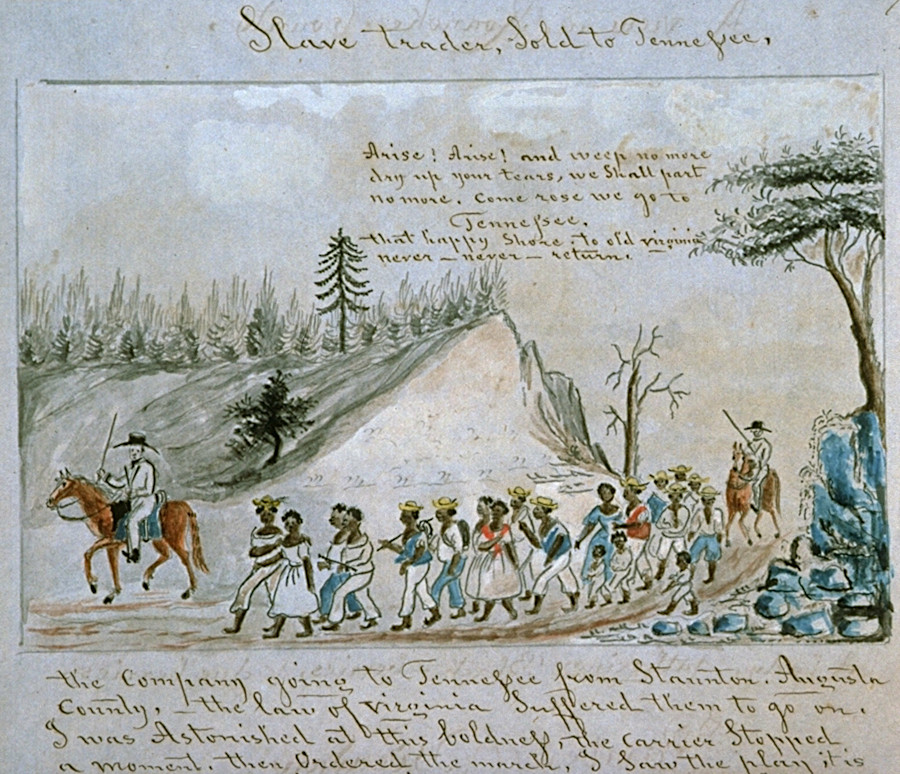
a coffle near Staunton in 1853
Slavery Images: A Visual Record of the African Slave Trade and Slave Life in the Early African Diaspora, Internal Slave Trade, Staunton, Virginia, 1853
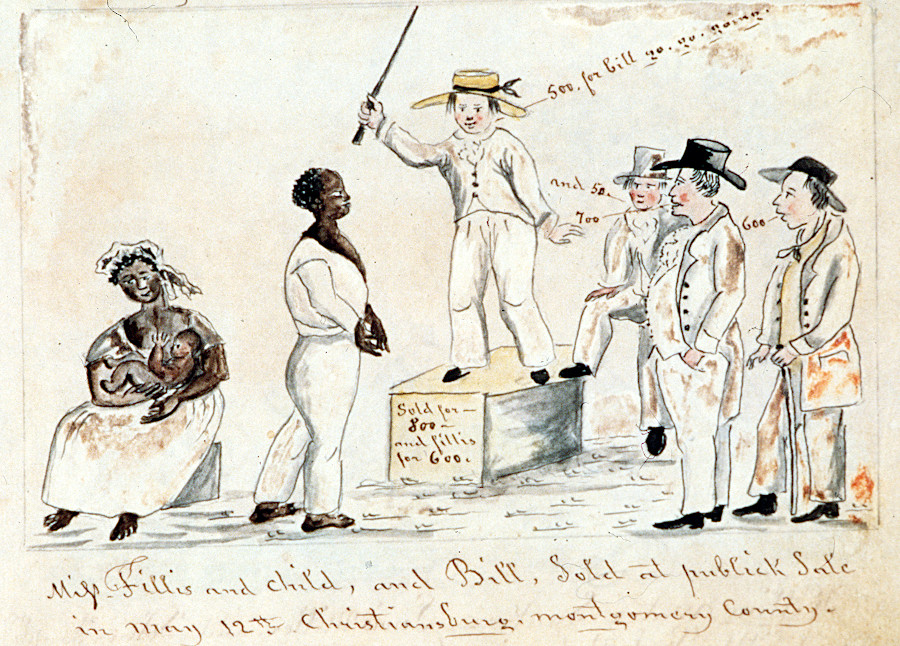
the trade in enslaved people was a business, with prices determined by supply and demand
Slavery Images: A Visual Record of the African Slave Trade and Slave Life in the Early African Diaspora, Miss Fillis and child, and Bill, sold at publick sale in May 12th, Christiansburg, Montgomery County
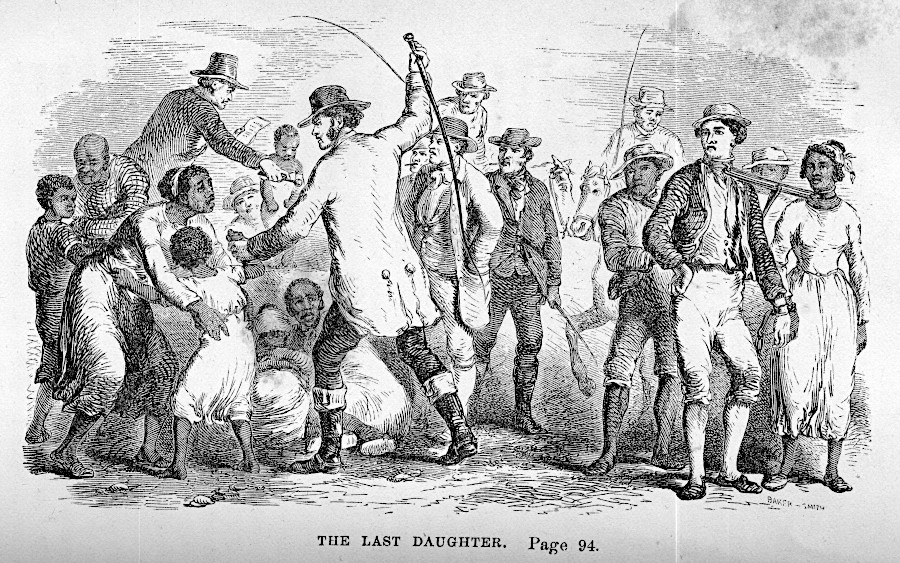
anti-slavery publications highlighted how families were broken up by the sale of children, over the objections of their mothers
Source: Slavery Images: A Visual Record of the African Slave Trade and Slave Life in the Early African Diaspora, Whipping a Slave, Virginia, 1850s
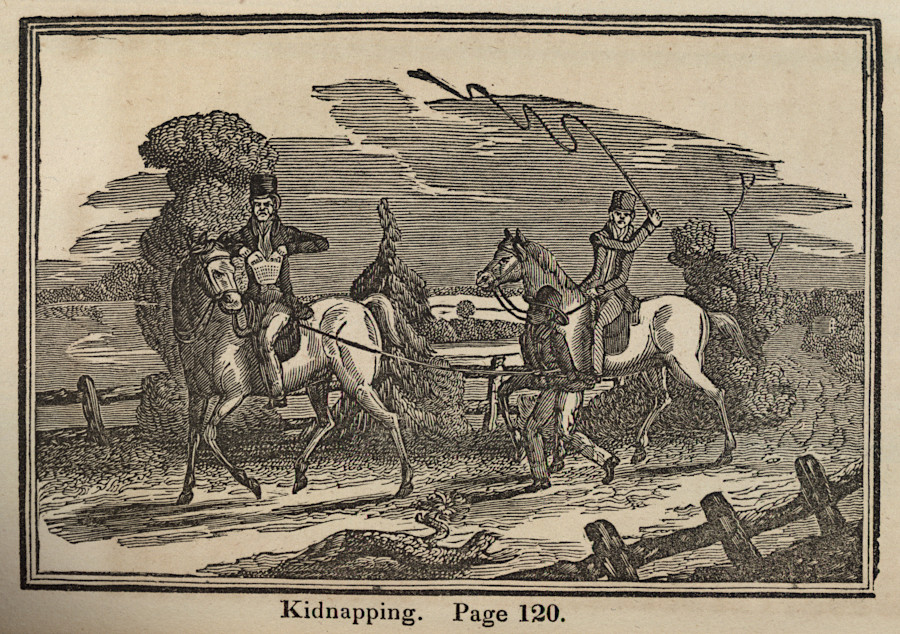
free people of color could be enslaved by destroying their certificates documenting their status and moving them away from the community where whites knew their status
Source: Slavery Images: A Visual Record of the African Slave Trade and Slave Life in the Early African Diaspora, Kidnapping
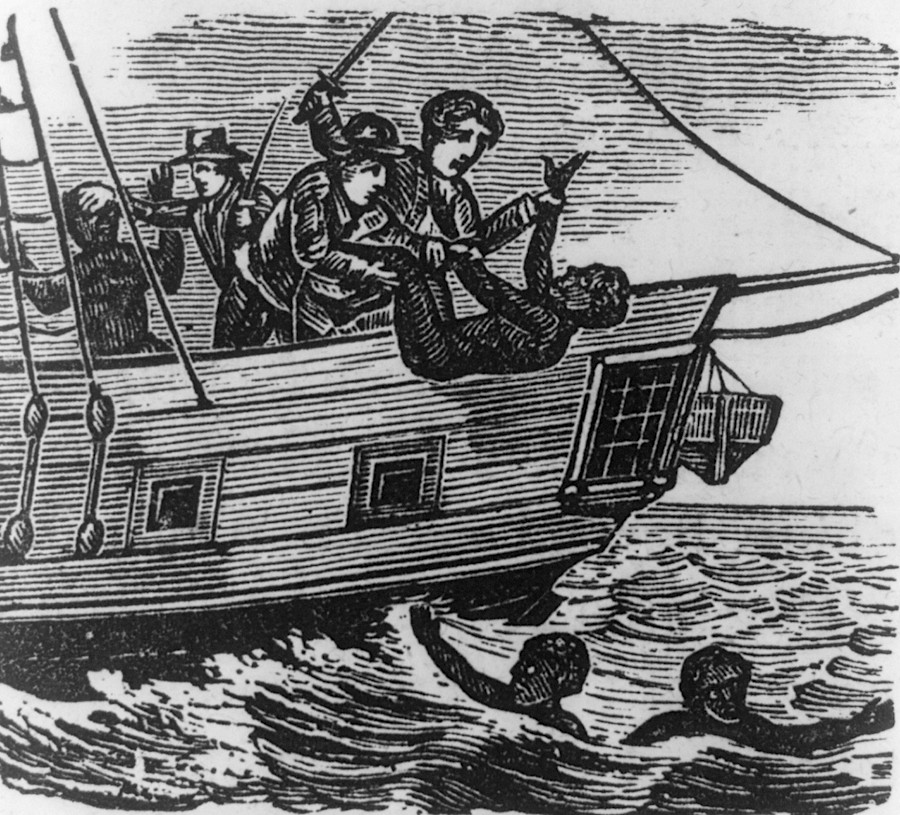
before arriving at their destination, slave ships would throw overboard the sick Africans that no one would purchase
Source: Slavery Images: A Visual Record of the African Slave Trade and Slave Life in the Early African Diaspora, Africans Thrown Overboard from a Slave Ship, Brazil, ca. 1830s
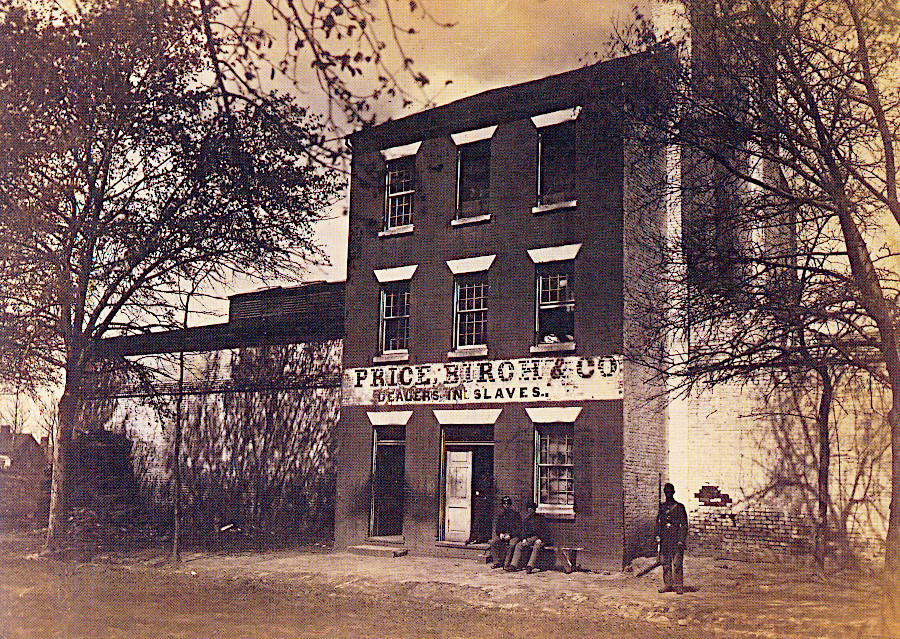
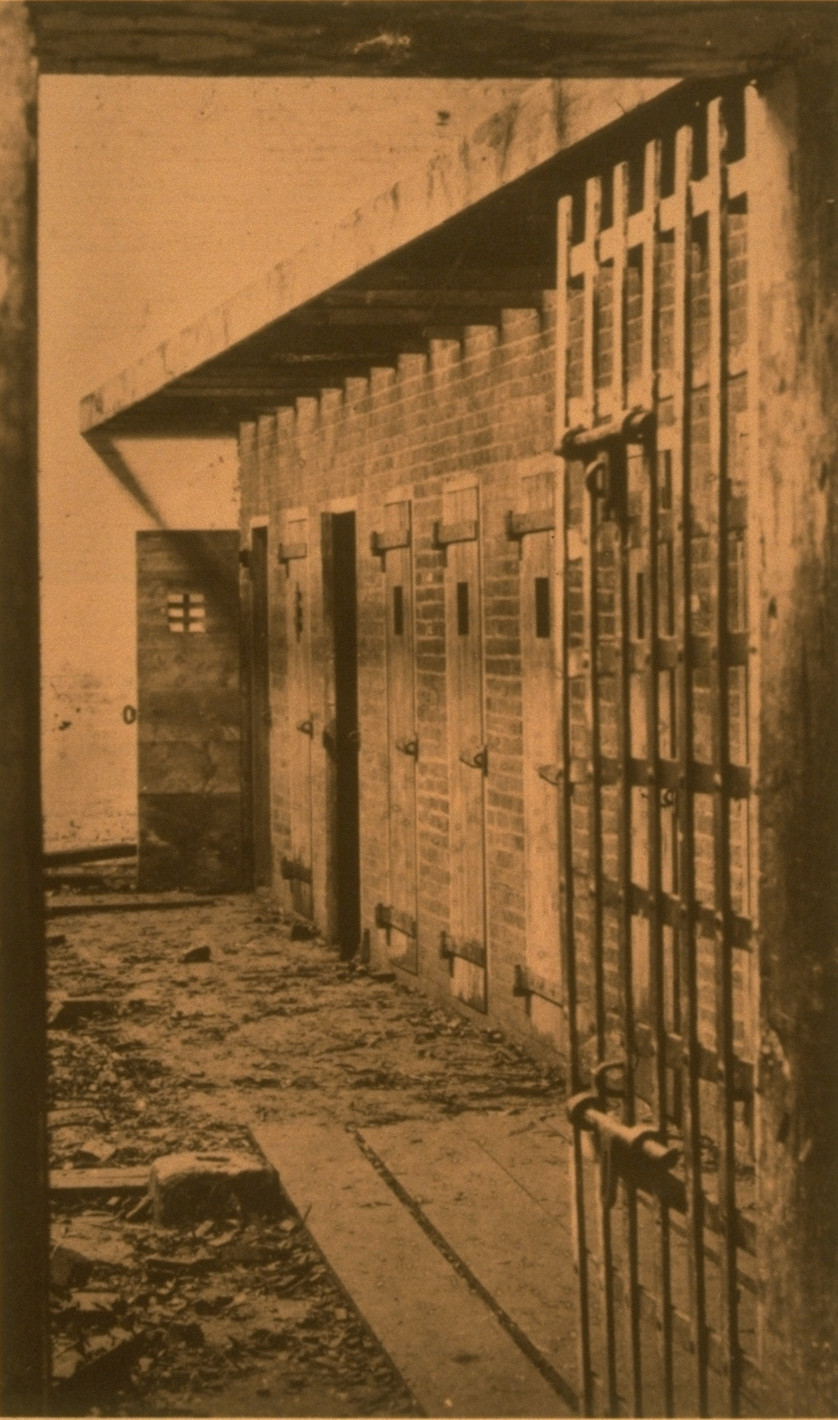
the Alexandria slave pen imprisoned people until they were transported for sale
Source: Slavery Images: A Visual Record of the African Slave Trade and Slave Life in the Early African Diaspora, Untitled Image (Slave Dealer, Virginia) and Holding Pen or Cells for Slaves Awaiting Sale, Alexandria, Virginia, 1863
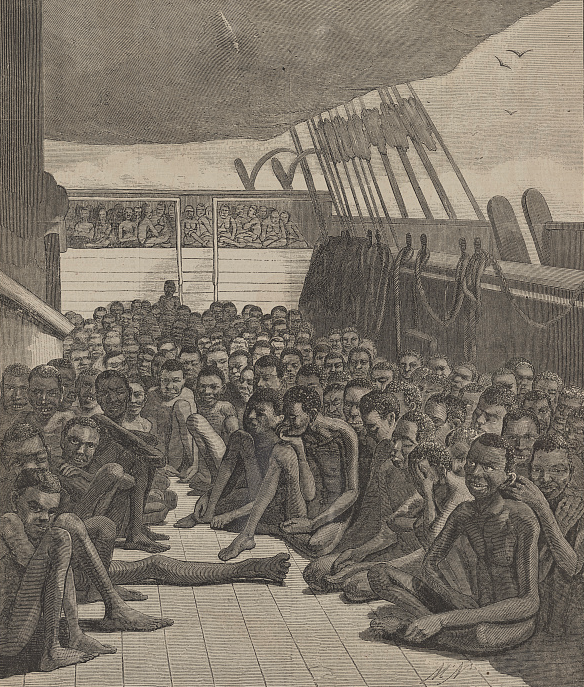
people were treated as cargo to be packed tightly during the Middle Passage
Harper's Weekly,, The Africans of the slave bark "Wildfire" (June 2, 1860)